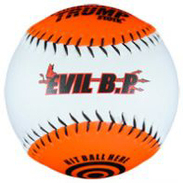OUR PHILOSOPHY
Natural Power Hitting with a Rotational Emphasis on the Hips
Swing Makeover 14 is up on youtube/Swing Makeover page..shows our Slide Tube System of Hitting.
This System shows a simple method of teaching the base Swing Mechanics.
Rotational hitting uses the strongest muscles of the body, the hips and legs, to drive the upper body open and throw the bat head into the ball. Working all parts in sync, we start by taking a strong stride, lowering on the rear leg to load those muscles and we angle the body back, so we can drive the ball up as a line drive to the outfield gaps. At the same time we pull our hands back towards the rear, with the lead arm straightening and the rear elbow tucking in tight to the body. We feel the lead lat tighten as we connect the hips to the hands. Its an easy tempo that speeds up as we come ahead on the stride.
As we land on the front foot, the weight transfers to it and the hips are thrust open...As they rotate, the hips and rear hip thrust up and open...pushing and pulling the shoulders and top arm and hand.. forward in an arc towards the ball. As the hips and upper body continue to rotate in sync, we push and extend the top arm and torque or snap the wrists...and we snap the bat head into and thru the ball. We may also push and extend the top arm as we torque both wrists against one another to help create this snap. This creates a rotation of the wrists as they snap sideways, within the rotation of the hips, for a second, higher level of batspeed. Since our swing is on a straight line, we angle the body back, so we can rotate against the front brace leg more quickly and angle this swing into the path of the pitch. We have enough consistency to hit the top, middle or bottom of the ball for desired effect. This keeps the bat head in the path of the pitch as long as possible maximizing contact and consistency. The program is simple, yet it achieves the best combination of power and average, especially in small hitters.
They KEY is the hips and snapping the wrists within..double pendelum and extra higher level of power and bat speed...the more effectively they are thrown open against one another, the easier the wrists snap and the bat head whips into the ball.
Advantages:
Power, Simplicity, and Consistency
Three main differences between fastpitch, baseball, and slowpitch are:
1. Timing
2. Length of Forward Step
3. Amount of Time hitter has to read and attack to pitch
IN FASTPITCH, the reaction time seems to be the shortest, thus we eliminate most load and keep it as short, compact, and quick as possible. We start with the hands and body as close to the starting position of the hip rotation as we can, so there is less pre-swing motion. Basically, just a small rotation back, timing the pitch as we push our weight onto the front foot... front foot comes down hard and we thrust hips open, extend top arm, and torque wrists as hands drive forward. All in sync and in one motion, driving ball away from us as a line drive to the outfield gaps.
IN BASEBALL, there is a longer reaction time and we can develop more rhythm and motion on the pre-swing. You often feel more of a load on the back leg and a stronger push off forward to more easily transfer weight to front foot as hips drive open. The same hip and wrist torque apply throughout the swing.
IN SLOWPITCH, the reaction time is the longest and allows us to wind and time longer. Most significantly, we can take a stronger and longer push into the stride forward off the back foot, so we create momentum and linear power, that converts as top arm extends and hips and wrists torque together to drive the ball. You still want to angle your body back and swing slightly up, but not quite the same as in fastpitch. In fastpitch we want to drive the ball back at the same angle the pitch is coming in, but in high arc we can not drive the ball back that high, but still keep the swing level to slightly up. We can actually aim at the top or bottom of the ball to achieve desired top spin line drives or underspin homeruns.
MAIN FLAWS OBSERVED Batter does NOT use the hips to FULLY drive hips open so belt buckle is facing pitcher. We see a poor body angle, poor push off the rear foot to start the stride, and lack of top arm and wrist extension to create snap. Often the hips just partially turn open and the upper body ends up chasing ahead with a critical loss of power and body angle. Secondly, if the hips are correct we often see the hitter not using the extend and snap..and wrists in sync with the hips to torque the bat head forward to drive the ball. Hips supply the power, but the wrists must direct the direction of the power by torquing the bat handle and driving and directing the bat head to impact thru the ball.
As we land on the front foot, the weight transfers to it and the hips are thrust open...As they rotate, the hips and rear hip thrust up and open...pushing and pulling the shoulders and top arm and hand.. forward in an arc towards the ball. As the hips and upper body continue to rotate in sync, we push and extend the top arm and torque or snap the wrists...and we snap the bat head into and thru the ball. We may also push and extend the top arm as we torque both wrists against one another to help create this snap. This creates a rotation of the wrists as they snap sideways, within the rotation of the hips, for a second, higher level of batspeed. Since our swing is on a straight line, we angle the body back, so we can rotate against the front brace leg more quickly and angle this swing into the path of the pitch. We have enough consistency to hit the top, middle or bottom of the ball for desired effect. This keeps the bat head in the path of the pitch as long as possible maximizing contact and consistency. The program is simple, yet it achieves the best combination of power and average, especially in small hitters.
They KEY is the hips and snapping the wrists within..double pendelum and extra higher level of power and bat speed...the more effectively they are thrown open against one another, the easier the wrists snap and the bat head whips into the ball.
Advantages:
Power, Simplicity, and Consistency
Three main differences between fastpitch, baseball, and slowpitch are:
1. Timing
2. Length of Forward Step
3. Amount of Time hitter has to read and attack to pitch
IN FASTPITCH, the reaction time seems to be the shortest, thus we eliminate most load and keep it as short, compact, and quick as possible. We start with the hands and body as close to the starting position of the hip rotation as we can, so there is less pre-swing motion. Basically, just a small rotation back, timing the pitch as we push our weight onto the front foot... front foot comes down hard and we thrust hips open, extend top arm, and torque wrists as hands drive forward. All in sync and in one motion, driving ball away from us as a line drive to the outfield gaps.
IN BASEBALL, there is a longer reaction time and we can develop more rhythm and motion on the pre-swing. You often feel more of a load on the back leg and a stronger push off forward to more easily transfer weight to front foot as hips drive open. The same hip and wrist torque apply throughout the swing.
IN SLOWPITCH, the reaction time is the longest and allows us to wind and time longer. Most significantly, we can take a stronger and longer push into the stride forward off the back foot, so we create momentum and linear power, that converts as top arm extends and hips and wrists torque together to drive the ball. You still want to angle your body back and swing slightly up, but not quite the same as in fastpitch. In fastpitch we want to drive the ball back at the same angle the pitch is coming in, but in high arc we can not drive the ball back that high, but still keep the swing level to slightly up. We can actually aim at the top or bottom of the ball to achieve desired top spin line drives or underspin homeruns.
MAIN FLAWS OBSERVED Batter does NOT use the hips to FULLY drive hips open so belt buckle is facing pitcher. We see a poor body angle, poor push off the rear foot to start the stride, and lack of top arm and wrist extension to create snap. Often the hips just partially turn open and the upper body ends up chasing ahead with a critical loss of power and body angle. Secondly, if the hips are correct we often see the hitter not using the extend and snap..and wrists in sync with the hips to torque the bat head forward to drive the ball. Hips supply the power, but the wrists must direct the direction of the power by torquing the bat handle and driving and directing the bat head to impact thru the ball.




